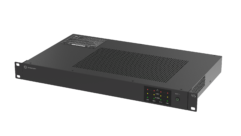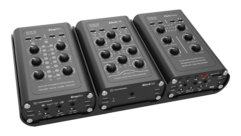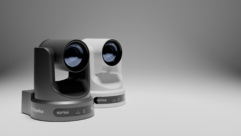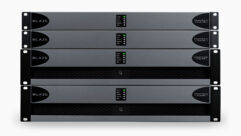
Peer Review: Sonance 875D SE Multi-Channel Amplifier
We install hundreds of architectural audio distribution amplifiers each year in high-end residences, and we have very specific needs. . .The Sonance 875D SE Multi-Channel Amplifier is literally the ideal response to our ideal specification, one that historically did not exist.
Anson Fogel
“>
Anson Fogel
Peer Reviewer: Anson Fogel, co-owner, Electronic Systems Consultants (ESC) in Aspen, Colo. ESC is a residential channel integration firm. The design/build architectural electronics company designs, engineers, and builds integrated control, audio/video, media, and communications systems in high-end homes.
My Pick: Sonance 875D SE Multi-Channel Amplifier
List Price: $2,000
What I Like About It: We install hundreds of architectural audio distribution amplifiers each year in high-end residences, and we have very specific needs and a desire to standardize around a specific product. The Sonance 875D is literally the ideal response to our ideal specification, one that historically did not exist. We like the fact that there is high-power density without heat. With eight, high-power, clean channels in two rack spaces and very low BTU per hour emission, we can stack them in racks without risk of failure from heat loads. It is also very efficient, reducing power loads and wiring demands in large stacks
MANUFACTURERS SPECIFICATIONS
- Number of channels: 8 (four stereo pairs)
- Output power (stereo): 75 watts RMS per channel, 0.25% THD, 20Hz – 20kHz, @ 8 ohms
- Output power (bridged): 300 watts per channel (x4) @ 8 ohms
- Frequency response: 20Hz to 20kHz, ±1dB
- Total harmonic distortion: 0.05% (1kHz, 8 ohms), 0.10% (1kHz, 4 ohms)
- Signal-to-noise ratio: -96dB (w/22kHz filter)
- Input sensitivity: 1.5V for 75W RMS output
- Input impedance: 10k ohms
- Maximum source input voltage: 4.0 VAC RMS
- Power consumption: 1,200 watts
- BTU/HR: 850
- Dimensions (W x H x D): 16 11/16 inches x 3 7/8 inches x 17 ¼ inches
- Shipping weight: 47 pounds
Also, the unit is light weight given the power output and number of channels, making shipping cost effective and installation easier. We also like the control features. Detailed serial control allows automatic service monitoring and eliminates multiple relay wiring runs for channel actuation and control, while retaining relays as well in situations where we need them. Finally, they are reliable; thus far, failures have been less than 1 percent in the field out of 68 installed, which is very low for any product and extremely low for lower cost multi-channel amplifiers.
I Would Change: If they could get it all in one rack space rather than two, we’d be even happier, but that would be a near impossibility given the connectivity.
Where I Used It: Among many other installations, we’ve used the Sonance 875D in a Castle Creek, Colo., residence outside Aspen. This was a $2,000-per-square-foot, 10,000-square-foot home, requiring 22 independent zones of distributed audio.
My Results: Architectural requirements demanded that no amplifiers or equipment could be located in the zones, and the very high cost per square foot meant that very little space is allocated to equipment at the head end. Also, there was a specific BTU per hour limitation on cooling the head end room, severely limiting the amount and type of equipment that could be used to drive the audio and video system. Our prior go-to device for amplification in this application produces too much heat and too few channels per rack unit. The Sonance 875D solved the problem with aplomb — not only does the unit solve the physical problems with very high-power density and efficient, low-heat power, it does so with audiophile quality current delivery that comfortably supplies power to near audiophile grade speakers. The result is 22 zones of high quality audio in one-third of a rack, producing less than 5,000 BTU’s per hour, and a very satisfied client.










